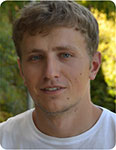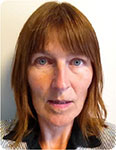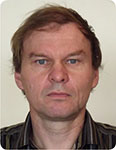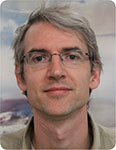Microstructural characterisation of organic-rich shale before and after pyrolysis
Yulia Uvarova A , Alexey Yurikov B , Marina Pervukhina A , Maxim Lebedev C , Valeriya Shulakova A , Ben Clennell A and David Dewhurst DA CSIRO
B Moscow Institute of Physics and Technology
C Curtin University
D CSIRO Earth Science and Resource Engineering
The APPEA Journal 54(1) 249-258 https://doi.org/10.1071/AJ13025
Published: 2014
Abstract
Organic-rich shales, traditionally considered as source rocks, have recently become an ambitious goal for the oil and gas industry as important unconventional reservoirs. Understanding of the initiation and development of fractures in organic-rich shales is crucially important as fractures could drastically increase the permeability of these otherwise low-permeable rocks. Fracturing can be induced by rapid decomposition of organic matter caused by either natural heating, such as emplacement of magmatic bodies into sedimentary basins, or thermal methods used for enhanced oil recovery.
In this work the authors study fracture initiation and development caused by dry pyrolysis of Kimmeridge shale, which is characterised with a high total organic carbon content of more than 20%. X-ray diffraction (XRD) analysis exhibits high carbonate (both calcite and dolomite) and low clay (illite) content. Field emission gun scanning electron microscopy (FEG-SEM) shows that kerogen is presented either as a load-bearing matrix or as a filling of the primary porosity with pores being of micron size. Cylindrical samples of the Kimmeridge shale are heated up to temperatures in the range of 330–430°C. High-resolution X-ray microtomographic (micro-CT) images are obtained. The microtomographic images are processed using AVIZO (Visualization Sciences Group) to identify and statistically characterise large kerogen-filled pores and pre-existing and initiated cracks. The relationship between the total area of fractures and the temperature experienced by the sample has been obtained. Total organic carbon content is determined for samples subjected to heating experiments. This approach enables a quantitative analysis of fracture initiation and development in organic-rich shales during heating.

Yulia Uvarova holds a geochemist/ exploration geochemist position in CSIRO, Minerals Down Under Flagship in Perth. Yulia works in a team of researchers developing new workflows and techniques for mapping the distal footprints of metalliferous mineral systems, through drilling and sampling and developing the science of understanding large geochemical footprints of mineral systems and their detection on the surface. Yulia graduated from the Faculty of Geology, Moscow State University with a BSc (Hons) in geology in 2001, and from the Department of Geological Sciences, University of Manitoba she got her PhD in 2008. After graduating from the University of Manitoba, Yulia undertook a research position at Queens’ University, Canada, where her research focused on geochemistry, mineralogy, petrology and genesis of economic mineral deposits, uranium in particular: the development of new exploration tools for the search of U deposits; behaviour of high field strength elements (HFSE) in high-temperature systems; geochemistry of non-traditional isotopic systems; and, application of these systems to elucidate processes responsible for deposit formation. yulia.uvarova@csiro.au |

Alexey Yurikov is a candidate for a master’s degree of petroleum engineering at the Moscow Institute of Physics and Technology (MIPT). His current work centers on the numerical modeling of fireflood technology in oil and gas shales. Alexey has a BSc (2012) from MIPT in applied physics and mathematics. He was an intern at CSIRO Earth Science Resource Enigneering in Perth, Australia in 2013. yurikovas@gmail.com |

Marina Pervukhina is the petrophysics team leader at CSIRO Earth Science and Resource Engineering Department. Marina is a physicist by background with a BSc and MSc in applied physics and mathematics, received from the Moscow Institute of Physics and Technology in Russia, and a PhD in geophysics from Kyoto University in Japan. Marina’s main research interests are theoretical and numerical rock physics, borehole geophysics and petrophysics. Marina was designated as an outstanding reviewer for Geophysics in 2009. marina.pervukhina@csiro.au |

Maxim Lebedev is an associate professor at the Department of Exploration Geophysics at the Curtin University of Technology. Maxim gained a masters of science in physics and engineering from the Moscow Institute of Physics and Technology, Russia, in 1986 and was awarded a PhD in physics from the same university in 1990. He worked for a decade as a physicist at the High Energy Research Centre in Russia, and for eight years as a material scientist at the National Institute of Advanced Industrial Science and Technology in Japan. In 2007, Maxim joined Curtin University and became the leader of an experimental group in rock physics. His research is focused on the properties of subsurface reservoir rocks and minerals. He is author and co-author of over 100 scientific papers, and has been granted six international patents. m.lebedev@exchange.curtin.edu.au |

Valeriya Shulakova is a geophysicist by background, with expertise in digital rock physics and 4D seismics. Prior to joining CSIRO in 2008 as a research scientist, Valeriya has spent more than 7 years working for geophysical service companies in Russia. She has a BSc in Geology (2001), a MSc in Geology (2003) and a PhD (2007) all from Moscow State University in Russia. Valeriya.Shulakova@csiro.au |

M. Ben Clennell leads the Petroleum Exploration and Production theme in CSIRO’s Energy Flagship. The theme covers onshore and offshore oil, gas research in both conventional and unconventional resources, and involves 70 full-time researchers at CSIRO research labs, located at major centres in Australia. Ben has a productive record in geological and geophysical research, and is an expert in petrophysics, natural gas hydrates in marine environments, hydrodynamics in porous media and more generally in marine and structural geology. He has led major research projects investigating both conventional and unconventional hydrocarbon reservoirs. Ben set up the petrophysics laboratories at the Australian Resource Research Centre and the X-ray CT scanning facilities, and is now helping the National Geosequestration Laboratory set up world class CO2 core flooding facilities. As well as having a range of international networks, Ben has works in close collaboration with partners from the Western Australian Energy Research Alliance (WA-ERA) at Curtin University and the University of Western Australia, where he also supervises a number of PhD students. Ben has a bachelor degree in geology from the University of Oxford and a PhD in structural geology from the Royal Holloway University of London. He has worked as a postdoctoral researcher at the universities of Birmingham, the UK and Leeds, with links to the Ocean Drilling Program. Before moving to Australia to work at CSIRO in 2003, Ben spent five years working as a visiting professor at the Federal University of Bahia in Brazil. ben.clennell@csiro.au |

David N. Dewhurst is a geologist by background with a BSc from the University of Sheffield and a PhD from the University of Newcastle, both in the UK. He has worked for over 20 years on microstructure and rock properties, with an emphasis on clay and shale behaviour. He did postdoctoral stints at the University of Birmingham, University of Newcastle, L’Institut Français du Pétrole and Imperial College before moving to CSIRO in 1998. There, he has worked on overpressure, fault and top seals and the links between geomechanics, rock physics and petrophysics in shales. David is the Research Programme Leader for Petroleum Geoscience at CSIRO, leading a team of 75 people and also is the head of the CSIRO Shale Research Centre, where he leads a consortium investigating gas shales. david.dewhurst@csiro.au |


